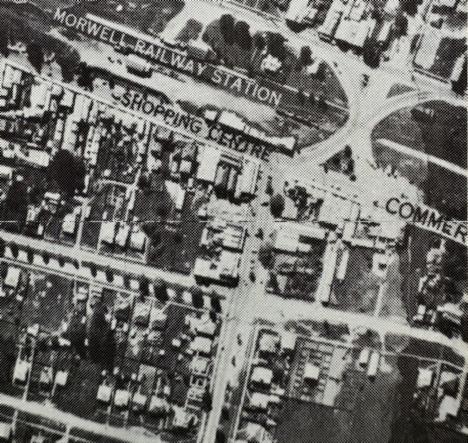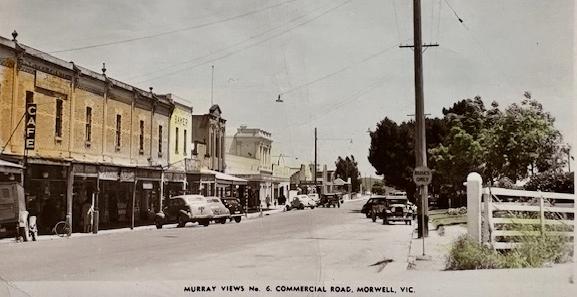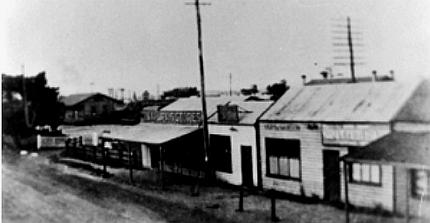Looking Back, April 2025
A bit of Morwell’s history worth recalling
By Leo Billington
Recently, a rarely used word came to one’s attention. Presentism.
Official meaning - uncritical adherence to present-day attitudes, especially the tendency to interpret past events in terms of modern values and concepts.
In relation to history, when Morwell was considered to be the “Cinderella town of the main Gippsland line?” (Morwell Advertiser, Thursday June 28, 1945), is this an example of presentism?
Quite the opposite. Contemporary history is explained by what was recorded from earlier times. These two “historical bookends” are knitted together.

To know it took almost ten years between 1945 and 1955 for agreement to have a comfort station (public toilet) built in Morwell’s business centre. Modern values about conveniently located public toilets are just as relevant and applicable these days as they were years ago.
Therefore, to spotlight Morwell’s contemporary history, let us consider some past history. Plenty has been written, analysing what can be done with Morwell’s central business district; and more will be written as life goes on. Back in the day, suggestions for improvement were made, and seemingly discarded.
For example, in editorial (Morwell Advertiser, Thursday July 16, 1953), it was written the then Morwell Shire Engineer, John Connan, announced Maryvale Motors would donate trees to be planted along the north side of Commercial Road.
He provided a list of trees to be donated - and placed between Hazelwood Road and the railway goods yard entry (approximately opposite to today’s Mannys Market). What a picture if the 15 silver birch trees and 150 coprosma shrubs best known for their glossy picturesque leaves had been planted.
However, there was more in this donation - including 32 desert ash in Church Street and 40 claret ash in Hopetoun Avenue.
In mid-August 1947, following a local deputation to the Country Roads Board, it was advised that the Board was “sympathetic” to a suggestion to have an avenue of honour planted along the Princes Highway, through the town, dedicated to those who did not return from World War 2.

When Mr Harold Winthrop Clapp had literally stepped from his Railways Commissioner’s train on Tuesday February 14, 1939, Councillor Alf Ronald “cornered him” to inspect a strip of ground adjacent to Commercial Road, opposite the railway goods shed. This patch had been converted into quite a beauty spot, and in addition to flower beds enabled the street to be widened some extra feet. Mr Clapp appeared very pleased with what he saw and suggested that the plantation be. extended further west.
The Morwell Advertiser (Thursday April 13, 1939) printed a letter to the editor submitted by “Progress” - who remained anonymous.
This writer wanted central Morwell to be beautified with lawns and flower beds to the eastern end of Commercial Road. Also, that there be similar plantations to the western part of then then Princes Highway.
“Progress” even went further with radical suggestions - that there be “a foot bridge, or better still, a subway” to assist residents crossing from homes and businesses northside to southside of town.

Further did “Progress” venture with what was a topical issue in town - the beautification strategy would “cut out back views of shops in the railway reserve (these back views have always been a noted eye-sore) and at the same time, would create another shopping site which is so much needed.”
“Progress” made the final conclusion - “we would become more of a happy family than, what we are at present. Morwell would then progress because the town would attract and the majority of the business that passes by at present would stop at Morwell instead.”
Also back in June 1939, Councillor Alf Ronald was vocal about the stability of shop verandas, and petrol bowsers being located on street kerbs. He was apparently the only councillor in attendance at the first annual meeting of the Morwell Civic Association where vital matters were being discussed and debated.
Councillor Ronald also explained the Colac Council had “provided 42 seats for their towns and gardens”, while emphasising “it was the duty of Councillors to attend Association meetings.”
This same meeting discussed preparing an action plan in connection to widening Commercial Road and leasing railway reserve land (north side of Commercial Road). About 40 years earlier, Councillors had “approached the Railways pointing out that the type of buildings existing (Commercial Road northside) were not in keeping with their situation in the town.”
To a visiting business delegation from Bendigo in May 1950, Councillor D J White referred to Bendigo's wealth of gold, saying “that coal was Gippsland's "gold", in quantities that could serve the State for centuries.” At the same occasion, Councillor. A. L. Hare expressed the opinion that the Latrobe Valley was the garden of Victoria. and assured the members of the delegation that, “should they return in the years ahead, they would find Morwell the capital of Gippsland”.
Mr. F. Maw, engineer in charge of the Morwell (SEC) Project, told the delegation “that the Latrobe Valley was now seeing something akin to a gold rush. Morwell was an interesting place, suffering from growing pains, which the Council was endeavouring to control in an orderly manner”.
Four months later in September 1950, Councillor Les Hare was elected Morwell Shire Council President. In his acceptance speech, he congratulated retiring President, Councillor Ronald on “the presentation of a report, the first retiring president's report in the history of the shire. (Morwell Shire Council was established in 1892.)
Councillor Ronald maintained his stance about Morwell’s future - “To split the main business centre, spreading it over a wide area, with the railway and highway in the middle, would, at this stage of Morwell's development be a mistake. (Councillor Alf Ronald - Morwell Advertiser, Thursday March 26, 1953; Council debate re current town planning scheme.)
Postscript - eventually, by the early 1950’s shops on the railway reserve were constructed using bricks and concrete, being more in “keeping with their situation in the town.” The wooden structures had disappeared. A subway was built as well as a new comfort station.


